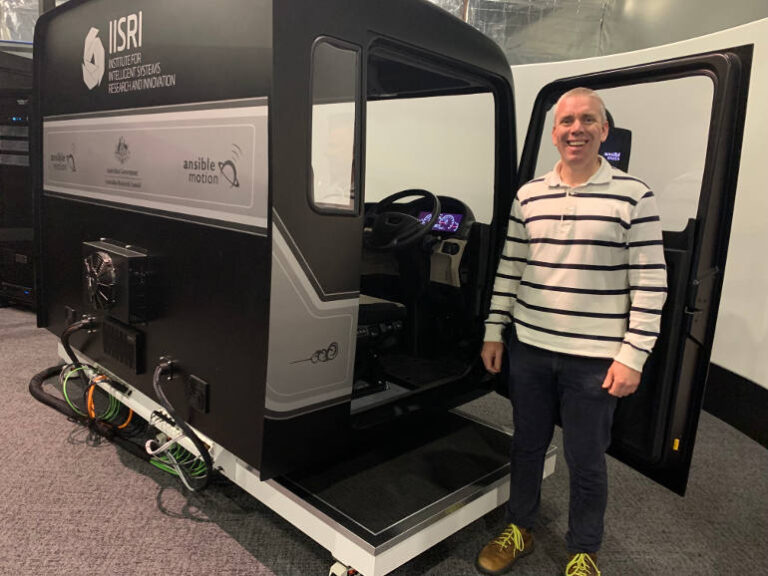Deakin University has a brand new $9 million heavy vehicle simulator that is set to be commercialised and available to Australian fleets to use for driver training or to model driveability in ICE to battery conversions, among other uses.
The Genesis Simulator had recently landed and was being set up at the Institute for Intelligent Systems Research and Innovation (IISRI) at Deakin’s Geelong University when I got to see it.
“When we say it’s new, it’s brand new. It’s world leading, cutting edge, whatever phrase you want to use,” said Stuart Robottom, from IISRI, the university’s research centre responsible for project.
The same simulator is in use at global automotive giants like BMW and Honda.
Robottom who showed me around said he reckons Continental Tyre’s use of a similar machine has replaced a million kilometres of real world testing by using digital tyre models instead of real tyres.
Deakin’s is the only one in the world that will be available to customers to use for their own bespoke tests or training.
“We’re talking about these human machine interface research projects, where we’ll now be able to run simulations where we can see what the driver has seen,” said Robottom talking about the scope of the projects.
“You talk about Janus [Electric] ripping the old Caterpillar out of the prime mover; we can take that weight out of a digital Kenworth, and we can put a battery in and we can see how it handles with all that mass over the front axle,” said Robottom.
Robottom said the institute is making direct contact with heavy vehicle fleets to let them know how it can be used.
“We want to talk to them about the simulator. And it might be the bus company sees it as a driver training asset. Another group might see it as something where they can do research into a new vehicle. They might want to have a new electric bus or truck. We can build a digital model and show how it might perform,” said Robottom.
One road tanker fleet is talking about a potential to use the simulator to test for rollover risk of partially laden tankers on roundabouts, said Robottom.
“Because of the way a B-double snakes around the roundabout, you can have some lateral slash left and right. And that can lead to — you don’t get any warning, apparently, — you can tip over. So they’re really keen to look at improving how the vehicle behaves on the road, when it’s not full.”
Meanwhile, every bus company they have talked to has the same problems — an ageing workforce, high staff turnover and a struggle to attract new people in.
“So they’re looking at ways where they might be able to use the simulator to come up with a training package that leads to more people who are more prepared when they get behind the wheel of a real bus,” said Robottom.
As mentioned earlier, the Genesis will also be able to run simulations to identify what the driver has observed. A forward looking camera will recognise other vehicles and all number of categories of objects such as signs, and pedestrians. Another driver facing camera can detect if the operator has also seen the vehicle or object by studying the movement of the eye to determine if the object has been looked at or not looked at. If it has been looked at, the in-vehicle monitoring system will also register if the driver put their foot on the brake, or swerved, or if they just kept going.
“And from that we can start to look at the cognitive load and the awareness,” said Robottom.
The Genesis simulator came about after the IISRI proposed it develop an advanced vehicle simulator. It sought and received funding from the Australian Research Council, the Victorian Government and Deakin University.
The simulator comprises a motion-platform that can move replica vehicle cabins about within a 4-metre by 4-metre movement envelope. This space is surrounded by a 360-degree and 5-metre high projection screen.
If you are interested in the Genesis Simulator, some aspects are explained here, or you can watch the video below.






